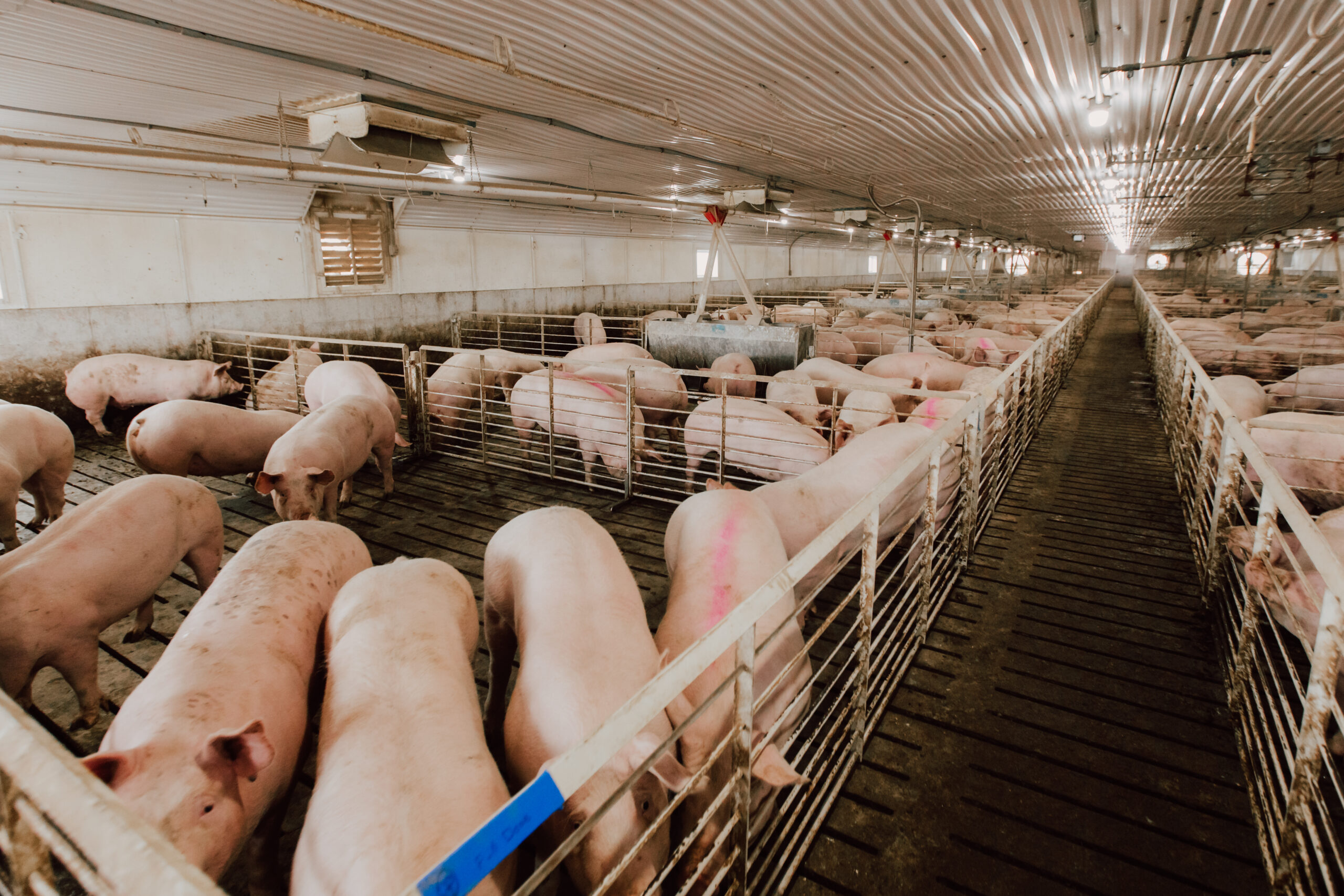Written by: Ashley Wagner, Ph.D.1, and Olivia A. Martin, MBA, PAS2 written exclusively for Essential Ag Solutions
KEY TAKEAWAYS:
- Readers will learn that ASFV has several mechanisms of transmission and that enhancing biosecurity measures is a necessary component of the protection toolbox.
- Feed is one of the greatest on farm risks to contaminate a farm with ASFV.
- Viral mitigants as a component of the diet are meant to reduce the viability of the virus before it gets to the farm.
- Research on Virabloc has demonstrated a reduction in virus viability of the following viruses: PEDV, PRRSV, EhV, and ASFV.
In part one of this series, readers were introduced to two mega viruses, the African Swine Fever Virus (ASFV) and Emiliana Huxleyi virus (EhV). These mega viruses are very similar to each other in size, structure, and the way they infect the host cell, but EhV presents zero threat to humans or pigs, which makes it a safe surrogate virus for laboratory experiments in Dr. Declan Schroeder’s virology laboratory at the University of Minnesota. Declan C. Schroeder, Ph.D. is an Associate Professor at the University of Minnesota in Molecular Virology and Veterinary Population Medicine. His lab studies the viability and infectivity of many viruses. In our previous article, we discussed with Dr. Schroeder how temperature and holding times do little to inactivate either of these megaviruses. If you missed PART ONE, you can check it out here.
As of February 2024 (when this article was written), ASFV has not yet been detected in North America but has been detected in some Caribbean countries. With the threat of ASFV that close to the US, understanding how the virus spreads is key to protecting our swine industry. ASFV can spread through several mechanisms, some of which can be dealt with through enhanced biosecurity (see Figure 1). For example, contaminated equipment or even clothing could present a risk; movement of infected pigs or meat products from infected pigs could also play a role in spreading the disease. This is where both government control and individual farm biosecurity come together to protect the US swine industry. But the hidden transboundary threat that is introduced onto all farms is feed. Many feed ingredients are produced or sourced from countries that are ASFV positive, and as mentioned in PART ONE, ASFV can survive for long periods of time on feed ingredients. Therefore, feed could be both our greatest threat of infection and our greatest asset for protection.
There have been documented cases of infection in the US with lesser robust viruses, like PEDV and Seneca Virus A, where contaminated feed has been cited as the vector of transmission. Keeping in mind from Part 1 of this article series, Dr. Schroeder mentioned that his laboratory has demonstrated that ASFV survives during extreme temperatures that would destroy PEDV and PRRSV. Therefore, it is scientifically plausible that feed could be the method of entry for ASFV into the US swine industry.
In our early work with Dr. Schroeder, we investigated various feed ingredients and feed ingredient combinations and their effect on the viability of the surrogate virus for ASFV, EhV. Some of these ingredients included botanical extracts, spices, and medium-chain fatty acids. This initial work led us to the most active combination of ingredients for reducing EhV viability, commercially referred to as Virabloc (Essential Ag Solutions, Sioux Falls, SD, USA). Once Virabloc was developed, we continued our work to determine the best inclusion rate. In these experiments, 10, 5, and 2 lb per ton were tested against the viability of EhV. It was determined that Virabloc, at the lowest inclusion rate, significantly reduced EhV particle viability!
Virabloc has excellent success in the laboratory. However, our work with Dr. Schroeder aims to produce a combination of ingredients that can inactivate the virus in the feed so that it poses less of a threat on the farm. We have investigated the impact of Virabloc on reducing the viability of ASFV, EhV, PEDV, and PRRSV in animal feed. We have also looked at the impact of Virabloc over time. These trials demonstrated that Virabloc mixed with feed contaminated with ASFV, PEDV, and PRRSV (note: each trial was conducted on a single virus, not a combination) reduced the viability of the virus by 2 logs (99% reduction) after 1 hour of incubation. Additionally, the time course work demonstrated further reduction of both ASFV and EhV viability with time. These tests examined particle viability following 5, 10, and 21 days. The inclusion rate in all of these trials was 2 lb/ton, which is the manufacturer’s recommendation. How might this translate into a real-world situation? This means that if a feed ingredient in the feed mill is carrying ASFV particles, and Virabloc is added to the diet at the mill, Virabloc will be able to break down the virus before it gets to the farm!
It is important to remember that Virabloc is not a silver bullet but a tool in your protection toolbox that also contains good management practices and enhanced biosecurity measures. Although there is still more to uncover about the infection capacity of ASFV, researchers have determined that feed contaminated with the virus can serve as a potential route of introduction and transmission of ASFV into the United States, and that would be devastating to the swine industry. Therefore, virus mitigation strategies in the feed may be our greatest opportunity for protection against ASFV.
Contact your Essential Ag representative for more information on Virabloc or any other Essential Ag product to enhance production on your farm.
Figure 1. African Swine Fever Virus transmission vectors that could impact the US swine industry.

1Director of US Business & Technical Sales, Probiotech International
2 Marketing Director & Technical Sales Specialist, Probiotech International

